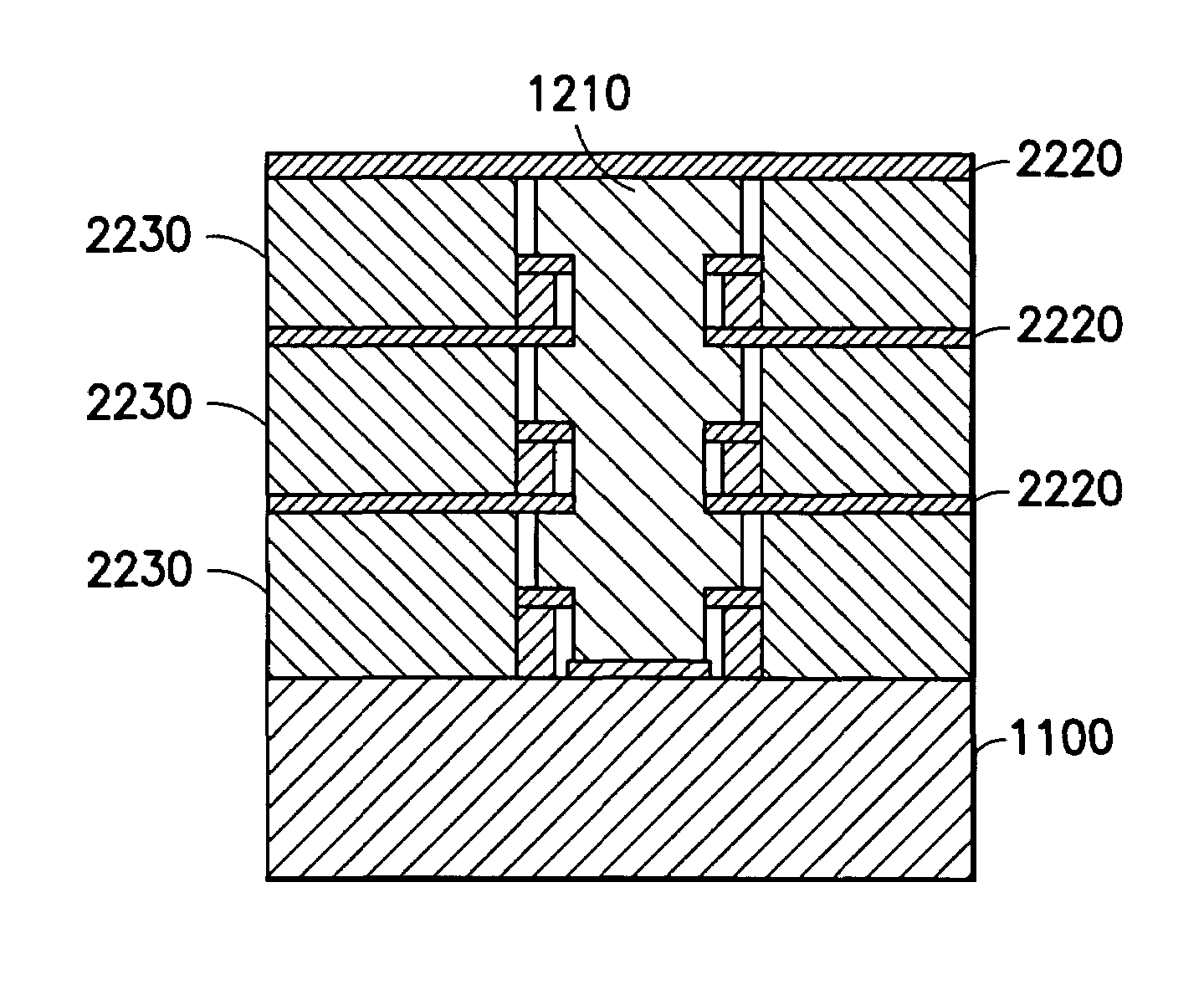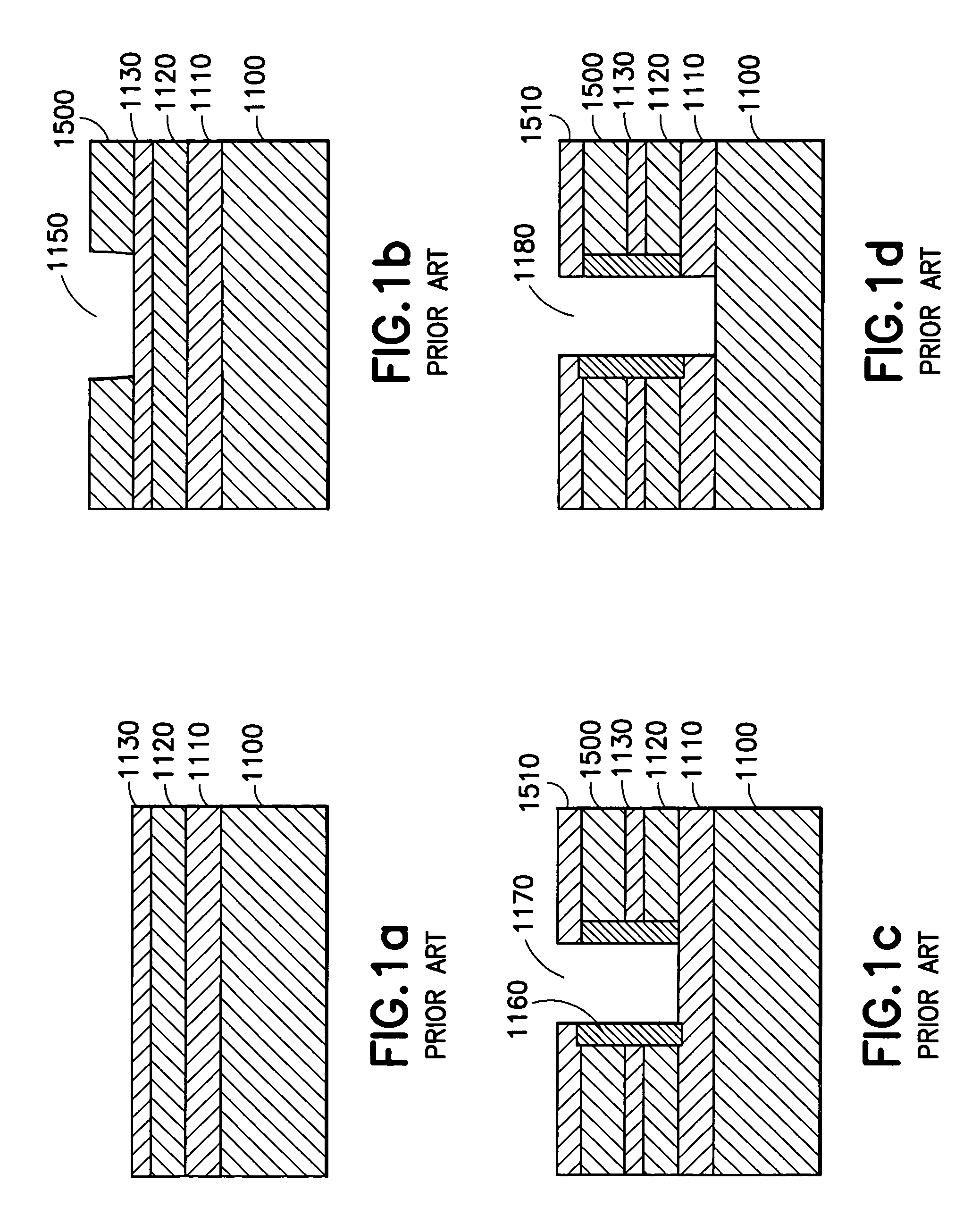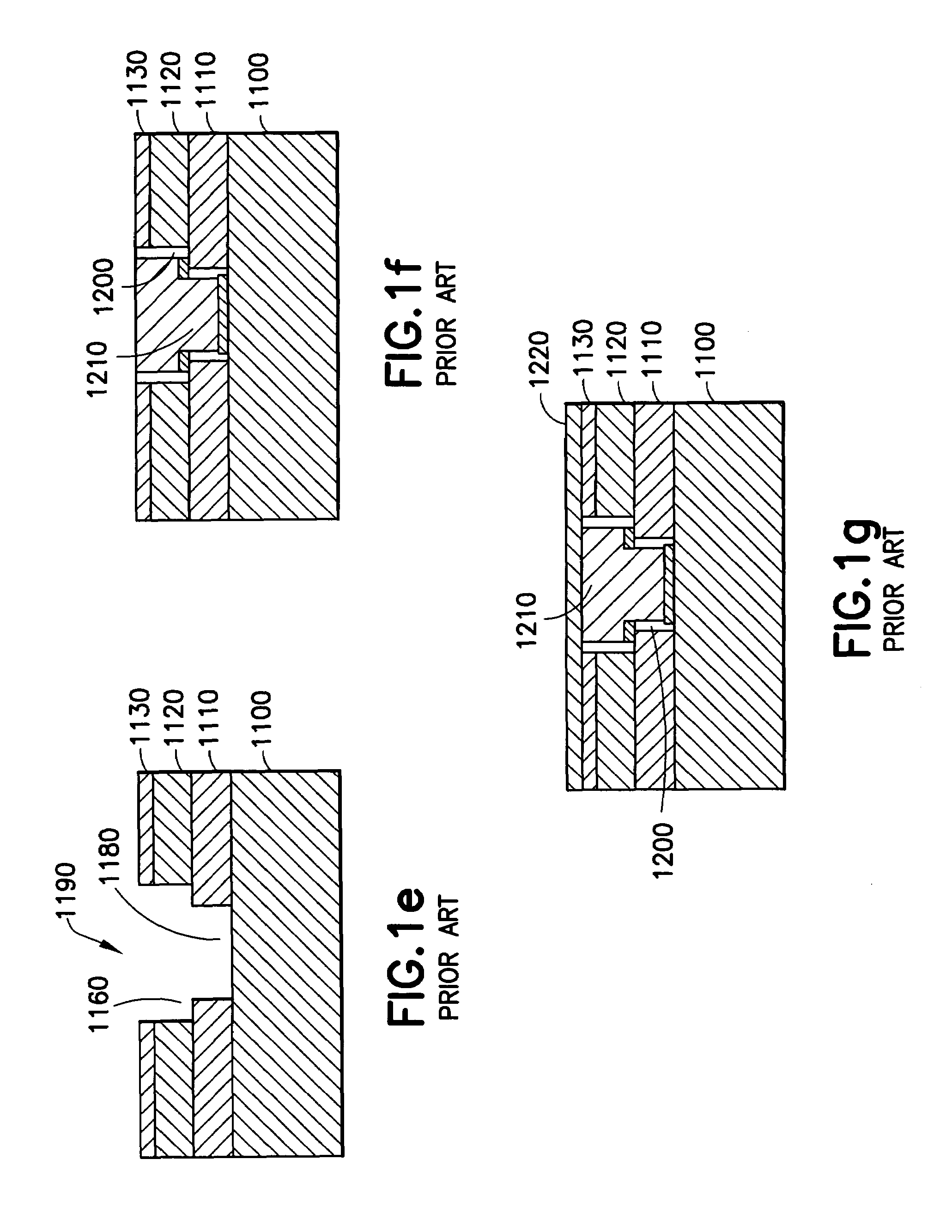Very low effective dielectric constant interconnect Structures and methods for fabricating the same
a dielectric constant and interconnect technology, applied in the direction of electrical equipment, semiconductor devices, semiconductor/solid-state device details, etc., can solve the problems of fracture toughness and cohesive strength, low k dielectrics have a much lower elastic modulus, and the mechanical strength of the interconnect structure is also correspondingly inferior, so as to improve the mechanical strength of the interconnect structure
- Summary
- Abstract
- Description
- Claims
- Application Information
AI Technical Summary
Benefits of technology
Problems solved by technology
Method used
Image
Examples
Embodiment Construction
[0021]This invention pertains to the very high performance microelectronic chips used in computers, microprocessors, microcontrollers, sensors, communication devices and the like. In particular, the inventive structures described herein pertain to the interconnect wiring networks on such chips, significantly reducing the signal propagation delay associated with these wires. The inventive methods detailed and claimed provide the integration steps required to fabricate these high performance interconnect networks with copper wiring and very low dielectric constant dielectrics.
[0022]The inventive method taught is described as the “Etch back and Gap Fill” (EBGF) integration scheme. This method begins with the fabrication of a dual damascene (DD) interconnect structure comprising the prior art steps described earlier and depicted in FIG. 1. The DD structure is built using intermetal dielectric materials (IMD) which are preferably more robust compared to the very low k dielectrics that wi...
PUM
| Property | Measurement | Unit |
|---|---|---|
| thickness | aaaaa | aaaaa |
| thick | aaaaa | aaaaa |
| thickness | aaaaa | aaaaa |
Abstract
Description
Claims
Application Information
 Login to View More
Login to View More - R&D
- Intellectual Property
- Life Sciences
- Materials
- Tech Scout
- Unparalleled Data Quality
- Higher Quality Content
- 60% Fewer Hallucinations
Browse by: Latest US Patents, China's latest patents, Technical Efficacy Thesaurus, Application Domain, Technology Topic, Popular Technical Reports.
© 2025 PatSnap. All rights reserved.Legal|Privacy policy|Modern Slavery Act Transparency Statement|Sitemap|About US| Contact US: help@patsnap.com



